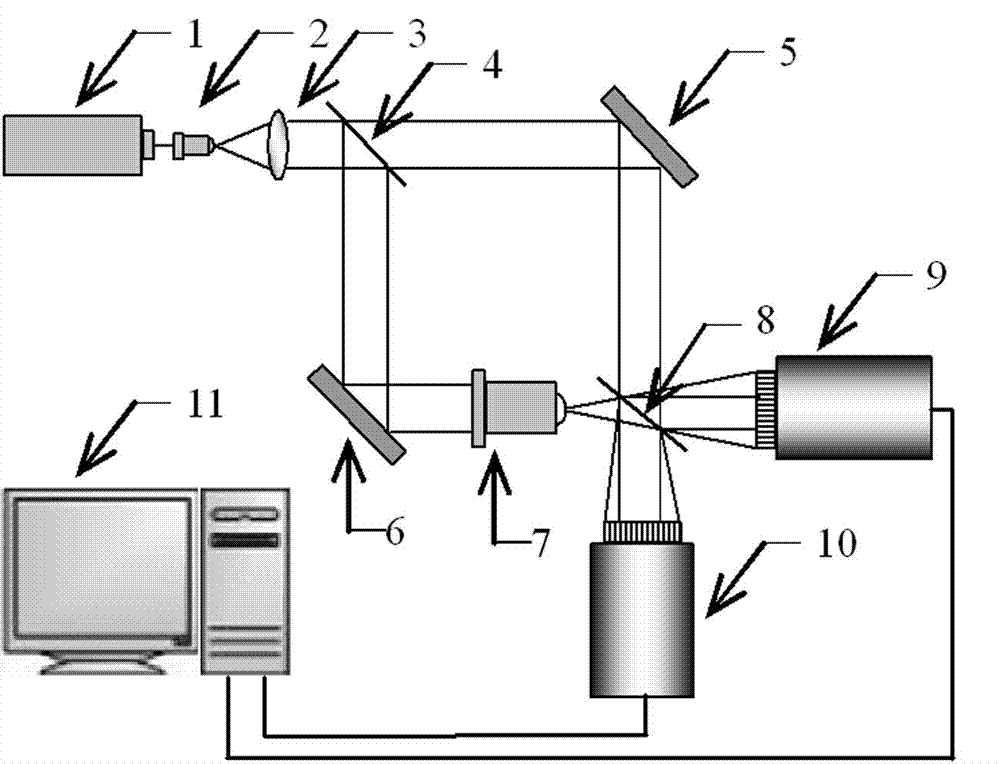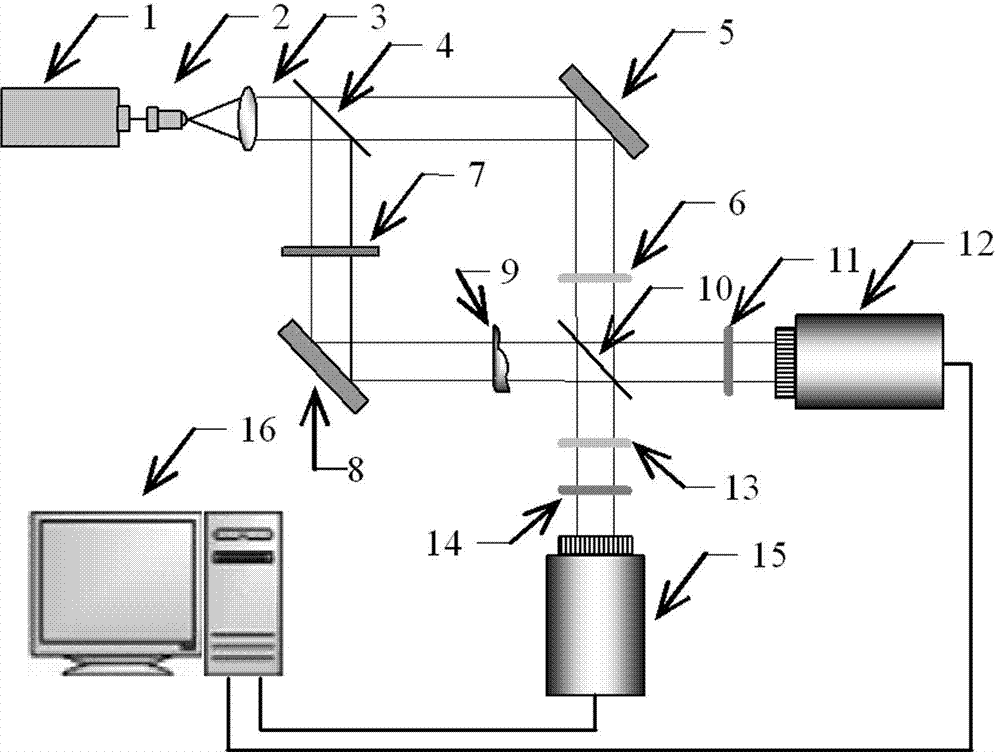Double charge-coupled-device (CCD) mirror image overlap adjustment and single-exposure coaxial digital holographic record device
A technology of adjusting device and mirror, applied in the field of digital holography, can solve the problems of difficulty in manufacturing phase-shifting devices, poor versatility, high price, etc.
- Summary
- Abstract
- Description
- Claims
- Application Information
AI Technical Summary
Problems solved by technology
Method used
Image
Examples
Embodiment Construction
[0028] The present invention will be described in further detail below in conjunction with the accompanying drawings.
[0029] see figure 1 Shown is the schematic diagram of the adjustment device of two CCD image overlapping positions in the device of the present invention, and the adjustment device includes a laser light source 1, a beam expander collimation system 2-3, a beam splitter 4, a plane reflector 5, a plane reflector 6, Beam expander lens 7, beam splitter 8, first CCD camera 9, second CCD camera 10 (fixed on the three-dimensional adjustment platform), computer 11.
[0030] Instructions for adjusting the mirror overlap of the two CCDs relative to the beam splitter 8:
[0031] The linearly polarized coherent light emitted by the laser light source 1 is expanded and collimated into planar light by the beam expander and collimator system 2-3, and is divided into two beams of planar light by the beam splitter 4, one of which is reflected by the plane reflector 5, and th...
PUM
 Login to View More
Login to View More Abstract
Description
Claims
Application Information
 Login to View More
Login to View More - R&D
- Intellectual Property
- Life Sciences
- Materials
- Tech Scout
- Unparalleled Data Quality
- Higher Quality Content
- 60% Fewer Hallucinations
Browse by: Latest US Patents, China's latest patents, Technical Efficacy Thesaurus, Application Domain, Technology Topic, Popular Technical Reports.
© 2025 PatSnap. All rights reserved.Legal|Privacy policy|Modern Slavery Act Transparency Statement|Sitemap|About US| Contact US: help@patsnap.com



